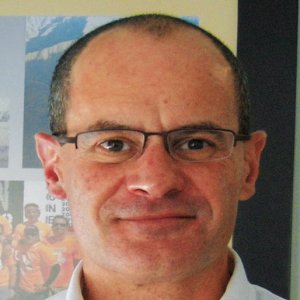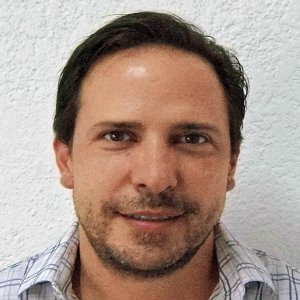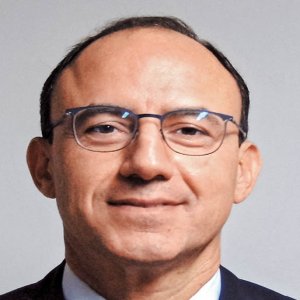Fighting HIV Epidemic Meand Fighting Diversity

Fighting HIV Epidemic Meand Fighting Diversity

STORY INLINE POST
The concentrated nature of the HIV epidemic in Mexico creates unique challenges for the agency tasked with eradicating the disease, the National Center for Prevention and Control of HIV and AIDS (CENSIDA). While the country continues to mark milestones in control and treatment, the disease's 'very diversity hinders progress.
“The infection has different dynamics depending on every state’s heterogeneity and social habits,” says Carlos Magis, Integral Care Director of CENSIDA. This diversity is a wakeup call for health institutions because even though it seems to be generally in control, there are concerns in specific areas.
CENSIDA has three main objectives: eradicate perinatal HIV, control HIV via sexual transmission and reduce new infections through intravenous drug use. The institution has implemented plans for each type of transmission. The center is the main governing body for the management of the epidemic in Mexico and is in charge of providing treatment to patients. According to the institution, in Mexico HIV blood transmission is eradicated and perinatal transmission is almost eliminated. Health institutions have also reached 63 percent detection, a reduction in new infections and they are close to achieving UNAids’ treatment goal of 90 percent by 2020.
Patricia Uribe, Director General of CENSIDA, says Mexico has a concentrated incidence among certain social groups: gay men and other men who have sex with men (SMS), transgender people, sex workers and their clients, prisoners, migrants and people who inject themselves with drugs.
“There is a challenge for Mexico and other Latin American countries that have concentrated epidemics,” she says. “We must develop di erent approaches for each group and control all of them at the same time. It is easier to fight generalized epidemics because we can o er a blanket service to the entire population.”
According to CENSIDA statistics, one out of every 1,500 women lives with HIV. Other affected groups include 0.07 percent of pregnant women, 15 percent of men who have sex with men, 18 percent of transgender people and 6 percent of people who inject themselves with drugs. Two years ago, CENSIDA started developing a National Detection Campaign in alliance with civil organizations with the objective of reducing the number of people infected with HIV. “We are one of the areas of the Ministry of Health that works the most with civil society, as well as working with hospitals and managing the treatment of the majority of the patients in the country,” says Magis.
The institution is in charge of purchasing and distributing drugs for 66 percent of patients with HIV and it receives MX$3 billion (US$166 million) every year from the Fund for Prevention of Catastrophic Expenses (FPGC) to buy medication. There are 138 Prevention and Attention Clinics for AIDS and Sexually Transmitted Infections (CAPASITS) across the country that provide treatment to 85,000 patients who are living with HIV but who do not have social security. CENSIDA finances the social projects awarded in the tenders, which cost around MX$100 million (US$5.6 million) per year to improve HIV detection and prevention among key populations. In an e ort to eliminate the HIV epidemic, UNAids declared a 90-90-90 treatment target by 2020: 90 percent diagnosis, 90 percent treatment and 90 percent viral suppression.
Regarding perinatal transmission, healthcare institutions began o ering the HIV test to every pregnant woman, which has helped reduce newborn transmissions to 46 percent. In 2015 there were only 71 cases but the aspiration is to follow in Cuba’s footsteps as the only country in Latin America that has successfully eradicated perinatal transmission. The
The concentrated nature of the HIV epidemic in Mexico creates unique challenges for the agency tasked with eradicating the disease, the National Center for Prevention and Control of HIV and AIDS (CENSIDA). While the country continues to mark milestones in control and treatment, the disease's 'very diversity hinders progress.
“The infection has different dynamics depending on every state’s heterogeneity and social habits,” says Carlos Magis, Integral Care Director of CENSIDA. This diversity is a wakeup call for health institutions because even though it seems to be generally in control, there are concerns in specific areas.
CENSIDA has three main objectives: eradicate perinatal HIV, control HIV via sexual transmission and reduce new infections through intravenous drug use. The institution has implemented plans for each type of transmission. The center is the main governing body for the management of the epidemic in Mexico and is in charge of providing treatment to patients. According to the institution, in Mexico HIV blood transmission is eradicated and perinatal transmission is almost eliminated. Health institutions have also reached 63 percent detection, a reduction in new infections and they are close to achieving UNAids’ treatment goal of 90 percent by 2020.
There are 138 Prevention and Attention Clinics for AIDS and Sexually Transmitted Infections (CAPASITS) across the country
Patricia Uribe, Director General of CENSIDA, says Mexico has a concentrated incidence among certain social groups: gay men and other men who have sex with men (SMS), transgender people, sex workers and their clients, prisoners, migrants and people who inject themselves with drugs.Challenge is in targeting states with more women. “It is an issue in states that are demographically more female such as Chiapas, Guerrero or Veracruz, while in Morelos eradication was accomplished in 2011,” says Magis.
In terms of sexual transmission, Uribe says this is one of the biggest challenges as many people do not use or have access to e ective prevention methods and comprehensive harm-reduction services. CENSIDA has created campaigns against sexual transmission with different focuses depending on the social group. “Our most critical are teenagers because they are becoming sexually active and they do not have all the information they need,” she says. For this campaign, the main message is usually to avoid unprotected sexual relationships but that is not always e ective because strategies for women and vulnerable populations are different, explains Uribe. “There are women who are infected by having sex with their partner so targeting for the test demands us to consider gender- inequality issues and to address social determinants such as access to health services, education, employment and gender violence.”
In the case of transmission through intravenous drug use, CENSIDA has designed specific projects for this demographic. However, as Uribe explains, it is a challenge to provide these patients with safety measures because it may be mistaken for promotion of drug use. “This type of transmission is not an issue across the country, it is focused in the north, in cities like Tijuana and Juarez City, and it has started to spread to Guadalajara,” says Magis.
The effcacy of these programs and CENSIDA’s access, coverage and treatment-quality care can be measured by mortality rates. There are peaks in certain parts of the country such as south of Veracruz, Tabasco and Campeche. These states have 10 deaths per 100,000 infections, while in the center of the country there are four per 100,000.
Magis says that many AIDS deaths occur because of late treatment. “This infection has a lot to do with addictions and sexual diversity, which is directly related to a discrimination stigma, so many people are reluctant to ask for help,” he says. The results from the most recent national discrimination survey held by CENSIDA in 2010 showed the biggest discrimination in Mexico is against those with HIV and AIDS and members of the LGBT community. “It is particularly important to eliminate discrimination and gender inequality because this prevents us from achieving the impact we need,” says Uribe.
The CENSIDA Director General acknowledges that HIV and AIDS have forced healthcare institutions to innovate their approach to health issues. “We have to deal with topics that were not covered before, like sexual diversity, sex work and intravenous drug use,” she says. “Society sees us as an open window to promote other aspects besides HIV.”

The specialized Clinica Condesa in Mexico City is a clinic for transgender patients that not only treats HIV but it also helps in the process of undergoing sexual reassignment. CONASIDA was also established to discuss HIV and AIDS- related topics with representatives of civil society who provide ideas to deal with problems.
Paradoxically, keeping up with all these improvements becomes a threat as patients’ life expectancy increases at the same rate as treatment prices. According to CENSIDA, in 1985 survival was one year but today a patient diagnosed with HIV and who begins treatment can survive for approximately 44 years. Right now, 91 percent of HIV treatments are ambulatory and patients frequently receive vaccines and odonatological, nutritional and psychological care, which has improved their life quality.
“Every year, our detection rates increase, meaning we have more patients and the MX$3 billion (US$166 million) budget rises by MX$500 million (US$27.7 million) every year,” says Magis. He says HIV is one of the most expensive diseases covered by the FPGC because it has no cure, which means patients require lifetime treatment. The high cost of HIV is also due to the antiretroviral patent scheme. There is no control over drug prices in Mexico, explains Uribe, due to the Mexican acquisition law that protects patents. “The pharmaceutical price for the most used drug for HIV in Mexico is four times higher than the manufacturing price, at MX$2,500 (US$138) per month for every patient,” he continues. “In Africa, the drugs are sourced from generics labs and the cost is MX$200 (US$11) per month. We have to create a dialogue between COFEPRIS and the authorities that negotiate the treaties.”






















